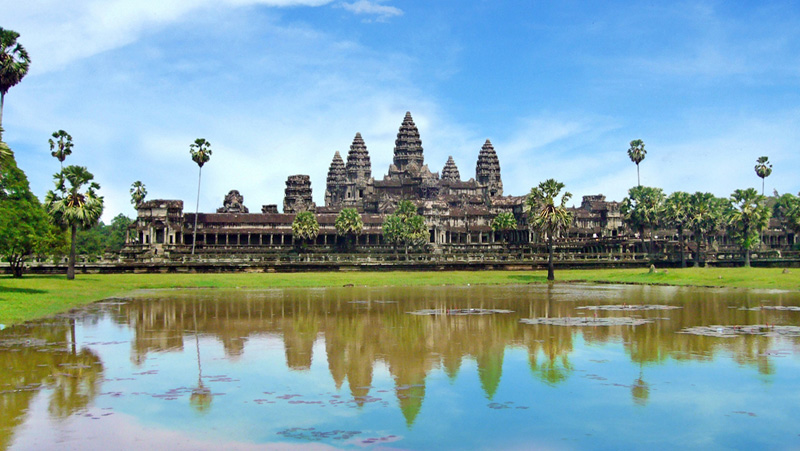


|
UNESCO- recognised Angkor Wat temple complex, a famous tourist attraction in Cambodia The
cultural week, jointly held by the Vietnam’s Ministry of Culture, Sports and
Tourism and the Cambodian Minister of Culture and Fine Arts, is also among
the events to mark the 50th anniversary since the establishment of diplomatic
ties between the two countries.
Prominent
among them is an exhibition scheduled at the Vietnam Centre for Exhibition,
Culture and Arts, introducing the natural landscapes and people, as well as
UNESCO-recognised tangible and intangible cultural heritages of Cambodia,
including the Temple of Angkor Wat, Temple of Preah Vihear, and the Sambor
Prei Kuk archaeological site.
The works
on display will also include artworks, Cambodian traditional costumes,
various types of kites and musical instruments, and paintings illustrating
the achievements of four localities: Phnom Penh, Siam Reap, Battambang
province, and Sihanoukville city.
As part
of the programme, artists from the Cambodian National Art Troupe will deliver
performances at the Hanoi Opera House and in the coastal city of Ha Long in
Quang Ninh province.
|